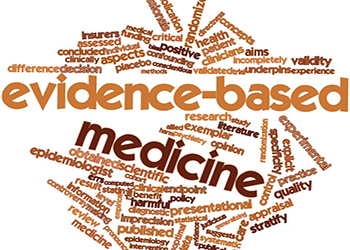Healthcare Evidence-Based Management: Towards Overcoming its Barriers in Uganda’s Local Government Healthcare System

Abstract:
This article identifies local barriers and potential promoters
of healthcare evidence-based management decision-making in Uganda’s local government
context. It puts to local context feasible measures for increasing research evidence
utilization by healthcare decision-makers, as part of the efforts to make research
more beneficial to intended users, and ultimate recipients of the services. The
findings were a result of a cross- sectional semi-structured questionnaire survey
of 225 clustered healthcare authorities[1] in Arua District Local
Government, West Nile Sub-region of Uganda. The survey data were triangulated with
nine key informant interviews (KIIs). Analysis reveals existence of multiple barriers
at individual, organizational and system’s levels of the local government healthcare
management. Standing out prominently were barriers related to attitude, perceptions
and beliefs of healthcare managers, dissemination, accessibility, communication,
participation, engagement, capacity, knowledge, skills, cost, time, staffing, workload,
leadership, policy enforcement, and culture. Other barriers related to researchers
were their competence, authority and level of mutual trust. Fortunately, most of
these barriers are consistent with those reported previously by other studies in
developing countries. Through a critical logical analysis, recommended strategies
for increasing utilization of research evidence were combined into five broad categories;
stakeholders’ engagement and participation, contextualized dissemination, capacity
building, local leadership and democracy, and knowledge marketing, awareness and
visibility. Again, these are not naïve, but important is the manner and details
in which they have been contextualized. Hence, this article adds to existing knowledge
about multifactorial contextual nature of barriers and promoters of research evidence
utilization, and the importance of action research in providing evidence for improving
quality of healthcare service delivery.
Keywords: barriers, promoters, research evidence, healthcare authorities.
References:
[1].
Albert, M. A., Fretheim,
A., & Maïga, D. (2007). Factors influencing the utilization of research findings
by health policy-makers in a developing country: the selection of Mali’s essential
medicines. Health Research Policy and Systems, 5 (1), 2.
[2]. Amanda, J. F., Dennis, F., Tara, J. S., Joseph,
G.D., LeAnn, E.B., Shawn, C. O.& Bibhuti, K.S. (2009). The Challenges of Implementing
Evidence Based Practice: Ethical Considerations in Practice, Education, Policy,
and Research. Social Work and Society International Online Journal, 7 (2).
[3].
Amin, M. F. (2005).
Social Science Research: Conceptions, methodology and Analysis. Makerere
University, Kampala.
[4].
Bamberger, M (2012).
Introduction to mixed methods in impact
evaluation. InterAction. Retrieved from
http://www.interaction.org/sites/default/files/Mixed%20Methods%20in%20Impact%20Evaluation%20%28English%29.pdf.
[5].
Barends, E., Rousseau,
D. M., & Briner, R. B. (2014). Evidence Based Management: The Basic principles.
Center for Evidence-Based Management.
[6].
Caracelli,
V., Greene,J., & Jennifer, C. (1997). "Crafting mixed-option evaluation
design." In J. C. Greene and V. J. Caracelli (eds.), Advances in mixed-option
evaluation: The challenges and benefits of integrating diverse paradigms. New Directions
for Program Evaluation, No. 74. San Francisco, CA: Jossey-Bass, pp. 19-32.460
[7]. Dobbins,M.,
Paula, R., Donna, C., Steve, H., Roy, C., Linda O'Mara., Kara, D., & Shawna,
M. (2009). "A description of a knowledge broker role implemented as part of
a randomized controlled trial evaluating three knowledge translation strategies".
Implementation science, 4,
23.
[8]. Fraser, I. & Clancy, C. M. (2007). Forward:
Importance of adopting evidence-based management in healthcare. https://www.ache.org/pubs/pdf_preface/Kovner_Foreword.pdf.
[9].
Gwenyth
R. Wallen, G. R., Sandra A. Mitchell, S.A., Melnyk, B.,
Fineout-Overholt, E., Miller-Davis,
C., Yates, J. & Clare Hastings, C. (2010). Implementing evidence-based practice: effectiveness of a structured multifaceted
mentorship programme.
J Adv Nurs, 66(12): 2761–2771. doi: 10.1111/j.1365-2648.2010.05442.x
[10]. Hsu,
D.H., & Lim, K. (2014). Knowledge Brokering and Organizational Innovation: Founder
Imprinting Effects. OrganizationScience , 25 (4), 1134-1153.
[11].
JEBMH (2014). Journal
of evidence based medicine (JEBMH). Retrieved from: http://www.jebmh.com/bibliographic.php.
[12].
Kelle, U. (2008).
Combining qualitative and quantitative methods in research
practice: purposes and advantages. Qualitative Research in Psychology, 3 (4), 293-311.
[13].
Kline, P. (2000).
Handbook of Psychological Testing (2nd Ed). London: Routledge.
[14].
Kothari, C. R. (2004).
Research Methodology: Methods and Techniques (2nd ed.). New Age International
Publishers.
[15].
Kyohairwe, S. (2014).
Local democracy and public accountability
in Uganda: The need for organizational learning. Commonwealth Journal of Local Governance,
Issue 15, Retrieved from: http://epress.lib.uts.edu.au/ojs/index.php/cjlg.
[16].
Lansang, M. A., &
Rodolfo, D. (2004). Building capacity in health research in the developing world.
WHO, 82 (10).
[17]. Lavis, J.
N (2006). "Research, public policymaking, and knowledge-translation processes:
Canadian efforts to build bridges". The Journal of continuing education
in the health professions, 26
(1), 37-45.
[18]. Lavis, J., Davies, H., Oxman, A., Denis, J. L.,
Golden-Biddle, K., & Ferlie, E. (2005). Towards systematic reviews that inform
health care management and policy-making. J
Health Serv Res Policy 10 (1), 35-48.
[19]. Lomas, J.
(2007). "The in-between world of knowledge brokering". BMJ (Clinical
research ed.) 334 (7585), 129-132.
[20]. Lyons, R.,
Warner, G., Langille, L., & Phillips, S.J. (2006). "Piloting knowledge
brokers to promote integrated stroke vare in Atlantic Canada.". Canadian Institutes
of Health Research (CIHR) Institute for Population and Public Health, editor. Moving
population and public health knowledge into action: A casebook of knowledge translation
stories. Ottawa, ON: Canadian Institutes of Health Research (CIHR) Institute
for Population and Public Health.
[21].
Meyer, M. (2010).
The Rise of the Knowledge Broker Science
Communication, 32 (1), 118-127
[22]. Melnyk, B. M., Fineout-Overholt,
E., Gallagher-Ford, L., & Kaplan, L. (2012). The state of evidence-based practice
in US nurses: Critical implications for nurse leaders and educators. The Journal
of Nursing Administration, 42(9), 410–417.
[23]. Mulrow, C. D (1995). Rationale for systematic reviews. Systematic
Reviews. Edited by: Chalmers I, Altman DG. 1995, London: BMJ Publishing Group,
1-8.
[24].
Nabyonga, J., Bataringaya-Wavamunno,
J., Bakeera, S. K., & Criel, B. (2012). Do guidelines influence the implementation
of health programs? - Uganda’s experience. BioMed Central, 7(98),
1-16.
[25].
ODI (2009).
Overseas development Institute (ODI) planning tools: Stakeholder Analysis: Toolkits.
Retrieved from: http://www.odi.org/publications/5257-stakeholder-analysis
[26].
Oliver, K., Innvar, S., Lorenc, T., Woodman, J & Thomas, J. (2014). A systematic review of barriers to and
facilitators of the use of evidence by policymakers. BMC
Health Services Research, 14, 2, 1-12.
[27].
Paula, R., Dobbins, M., & Decorby,
K. (2008). "Life as a knowledge broker in public health". Journal of
the Canadian Health Libraries Association (JCHLA/JABSC), 29, 78-82.
[28].
Pfeffer, J., &
Sulton. I, R. (2006a). Decision-making: Evidenced-based Management. Harvard Business Review, 84 (1), 63-74. Retrieved
from https://hbr.org/2006/01/evidence-based-management
[29].
Pfeffer, J. &
Sutton, R. (2006b). Hard Facts, Dangerous Half-Truths and Total Nonsense: Profiting
from Evidence-Based Management. Boston, MA: Harvard Business School Press.
[30].
Sauerborn, R., Nitayarumphong, S., & Gerhardus, A. (1999). Strategies
to enhance the use of health systems research for health sector reform.
Tropical Medicine and International Health.
4(12), 827-835.
[31].
Sackett, D. L.,
Rosenberg, W. M. C., Gray, J. A. M., Haynes, R. B. & Richardson, W. S. (1996). Evidence Based
Medicine: What It Is and What It Isn’t, in: British Medical Journal, 312, 71-72.
[32]. Squires,
J. E., Hayduk, L., Hutchinson, A. M, et al. (2013). A protocol for advanced psycho-metric
assessment surveys. Nurs Res Pract.
[33]. Squires,
J. E., Estabrooks, C. A., Gustavsson, P., & Wallin, L. (2011a). Individual determinants
of research utilization by nurses: a systematic review update. Implementation
Science, 6 (1),1.
[34]. Straus,
S. E., Richardson,W. S., & Glasziou, P et al. (2005). Evidence-based medicine, how to practice and teach EBM. Third edition.
Edinburgh: Churchill Livingstone.
[35]. Tumushabe,
G., Muyomba-Tamale, L., Ssemakula, E. &
Lukwago, D. (2010). Uganda Local Government Councils Score-Card Report 2008/09:
A Comparative Summary of Findings, Conclusions and Recommendations. ACODE Policy
Briefing Paper Series, Kampala.
[36].
Verona, G., Prandelli, E., & Sawhney,
M. (2006). "Innovation and virtual environments: Towards virtual knowledge
brokers". Organization Studies, 27 (6), 765-788.
[37].
Zohrabi, M. (2013).
Mixed Method Research: Instruments, Validity, Reliability and Reporting Findings.
Theory and Practice in Language Studies,
3(2), 254-262.

